Why Public Education is Worth Fighting For – A Guide to Understanding School Funding Issues and the Steps We Can Take to Save Public Education
11/15/2021

Part 1 in a 3-Part Series - In this three-part series, we will explore the current fight to maintain public education, outline some strategies for ways we can improve the current situation, and look at some of the people that have made strides in the fight to save public education across the nation.
Sitting in my mom's second grade classroom watching her teach a new group of second graders, I realized I wanted to teach. I was able to see the way those second grade students looked up to my mom. She was like a surgeon, diagnosing, planning, and engaging students individually in accordance with what they needed to become the best they can be. From this point on, I knew teaching was a calling, my calling.
From this point on, I knew teaching was a calling, my calling.
Though I was only a senior in high school, I knew what I wanted to do. My journey had begun.
We Built a Free and Appropriate Public Education
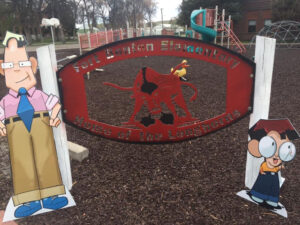 My ability to be introspective and question the institution of public education also began at that time. From a young age I began to learn all about this construct of American society where all children were guaranteed FAPE, or a Free and Appropriate Public Education.
My ability to be introspective and question the institution of public education also began at that time. From a young age I began to learn all about this construct of American society where all children were guaranteed FAPE, or a Free and Appropriate Public Education.
I quickly found out what the extremes of FAPE actually looked like, from rural frontier Montana to the oil-rich and well-funded (at the time), Alaska. Classrooms in Montana had one computer and older resources, as well as many turn-of-the-century buildings still in use. When examining these buildings, you could see many of them had been added on to over the decades, with a hodge-podge of different building materials and construction methods. It has always amazed me that many of the Montana schools and communities choose to add-on to existing buildings rather than constructing a new building that would be more suited for their children.
When I first started teaching in Palmer, Alaska, schools were going up rather quickly across the Mat-su Valley School District, as well as the nearby Anchorage School District. These districts were building schools that met the needs of the growing population, as well as taking into account the latest in technology, educational designs, and best practices emerging from research.
Supporting Schools Starts with Adequate Financial Support
Of course, all this takes money!
After two years in Alaska, and wanting to move closer to my family due to concerns over their health, I started my teaching career in a new school on Flathead Lake, Lakeside Elementary in Montana. This new school was beautiful and faced the enormous lake. If you were lucky, your classroom had a view of it, but that became less and less common over the years as condos went up on the shore. When I interviewed, I was sold on this view and location within western Montana. I was ecstatic, my first contract in Lakeside, Montana was for $19,100 in 1999.
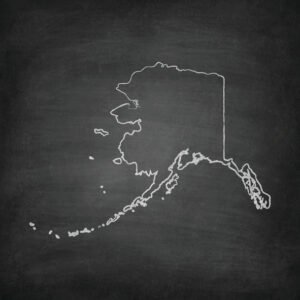 Even though I was making roughly half of what I was going to make in Anchorage, I was happy with my move...my family was now within a half day's drive.
Even though I was making roughly half of what I was going to make in Anchorage, I was happy with my move...my family was now within a half day's drive.
Lakeside Elementary was shiny and overlooked the lake. What it didn't have was resources, like textbooks or technology, to use with our students. Most of the general fund money had been put into finishing the school. This started my understanding of standards-based instruction and the inequities you can encounter when trying to meet them. I was expected to find resources that covered the standards we created. In the 1990's in Montana, the Office of Public Instruction only supplied state standards for students in grade four, eight, and upon graduation. School districts were required to fill in the gaps and create standards for K-3rd, 5th-7th, and 9th-11th grades. The accountability was up to each school district or educational cooperative.
I learned so much in these first years of education, but had many questions. Who paid for my school's construction, the resources that I used to instruct these students, and how was I paid to do this job? All great questions for a new educator.
In Montana, financing Montana's public school system comes from three different sources: 1) federal money, 2) state money, and 3) local taxpayers. Unfortunately, the funding formula relies heavily on the taxpayers that own land and student enrollment. Herein lies the problem, how can we continue to ask our taxpayers to help foot the bill when our costs for everything in society continues to climb? I then realized how important it was in Montana to be in a community that supports education.
What I saw as the main differences between schools and resources in Montana versus Alaska was happening in my own state at a microlevel. I began to travel around Montana and visit schools that portrayed this disparity: Geraldine, Rapelje, Harlotown, Corvallis, Fort Shaw, Fort Benton, and more. Then I have viewed newer building construction in the following school systems: Hamilton, Lockwood, Whitefish, Big Sky, Helena, Winifred, and more.
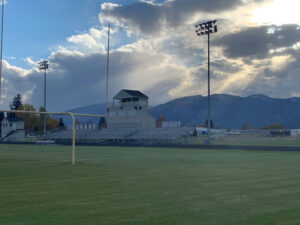 I learned that in the late 1980's a coalition of school districts in Montana sued the state for not providing the "A" of FAPE (Free and Appropriate Public Education). My current school district was one of the lead plaintiffs. This coalition of school districts won, but the problem persists even though the funding formula has been changed a few times since this lawsuit was settled.
I learned that in the late 1980's a coalition of school districts in Montana sued the state for not providing the "A" of FAPE (Free and Appropriate Public Education). My current school district was one of the lead plaintiffs. This coalition of school districts won, but the problem persists even though the funding formula has been changed a few times since this lawsuit was settled.
What do these school districts "have" that the others do not ("have nots")?
We need visionary educational leaders and increased local support for public education!
This is a multi-faceted question that cannot be easily answered with the previous two answers of visionary leaders and supportive local taxpayers. In these school districts that have a drastic disparity in their facilities and resources you will find public support of education, as well as visionary leaders. Then what is the answer?
Are We Seeing a Migration Away from Publicly Funded Education?
I see a need to "re-vision" and fight for public education!
How do our national, state, and local leaders allow for such disparity between the school districts and does this happen across the nation? Why does the zip code dictate the facilities and resources you have to teach FAPE?
To answer these questions, we must delve back into the original philosophy of why public education is a social construct. I believe by doing this, we can then reacquaint ourselves with the power of a solid public education for our kids and future generations.
Nationwide we have seen private schools and home schools with increases in their attendance. Those that can afford to pay for private schooling or homeschooling are doing so at rapid rates. Within my own state, the homeschool population continues to rise faster than public or private school attendance according to recent data released by Montana's Office of Public Instruction (October, 2021). If it is happening in Montana at this rate, when we are usually 5-10 years behind national trends, then this is not a new problem for American public education.
As public education supporters, we must join this battle!
I find it fascinating that in many communities across the United States families are choosing private schools before their local public schools. What are these public schools lacking, what would make them more desirable for families?
We don't have this problem or phenomenon in Montana...yet.
I had first heard about other types of schools (Charter, magnet, for profit) through my AFT monthly magazine of some state battles in the early 2000's where public education was losing students to charter and private schools. I felt ignorant being from Montana, as I was just learning how these schools operated and were not allowed due to laws in the Montana constitution. Our private schools are all religious based. I didn't know how directly private and charter schools could affect the funding and public perception of education in the community. In my limited view, I have always believed that public education is the primary way most children are educated in Montana and across America.
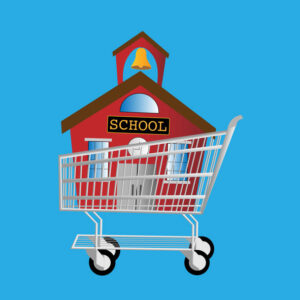 I learned about this move away from public schools. The notion that students were moving towards charter schools and away from public schools was highlighted to me in the documentary titled, Waiting for Superman (2010). One of the main leaders showcased in this documentary, Geoffery Canada, explains the move from students attending public education in a community to a more competitive environment by providing opportunities for children to learn in charter schools in Harlem, New York. These charter schools were successful.
I learned about this move away from public schools. The notion that students were moving towards charter schools and away from public schools was highlighted to me in the documentary titled, Waiting for Superman (2010). One of the main leaders showcased in this documentary, Geoffery Canada, explains the move from students attending public education in a community to a more competitive environment by providing opportunities for children to learn in charter schools in Harlem, New York. These charter schools were successful.
The documentary describes the move for those that can afford it from urban schools to suburbs, or the move to expensive private schools. They detail this degradation of inner city schools as zip codes dictated the viability of a solid education.
Michelle Rhee, past Chancellor of Education in Washington, DC, was another school reformer highlighted in this documentary that used charter schools to rebuild education in her community. The drastic reform of these education systems may cause change in some of these urban areas where this zip code move was evident, but I argue that these systems are not great for public education in all areas across the United States.
Let's Adequately and Appropriately Fund Public Education First
Why not fix the public education systems first before we gut them and create voucher systems for these elite schools?
Many of these charter and private schools use a lottery type system that goes against my philosophy of why public education was first founded. Horace Mann stated we need to develop a system for "every child."
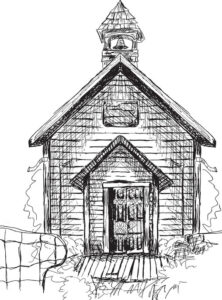 Horace Mann's education reform and his vision is what has been in place across America to this day. Though this may be viewed as a "socialist construct," our nation was primarily built on these great students who attended America's public schools.
Horace Mann's education reform and his vision is what has been in place across America to this day. Though this may be viewed as a "socialist construct," our nation was primarily built on these great students who attended America's public schools.
Horace Mann (1796-1859), an educational reformer, in 1837 used his position to enact a major educational reform titled, The Common School Movement. It ensured every child would receive a basic education funded by local taxes.
Though the ideas for Michelle Rhee and Geoffery Canada sound enticing for many parents, I argue what that looks like in more rural settings where the public school is the foundation of the community, the number one employer, and the number one economic driver!
Do We Really Want Zip Codes and Perceptions Based on ‘Branding' to Determine Educational Funding?
Through this competition I believe we will continue to erode our public education system. The best education will not only be based on zip code, but by the public's perception of public education. Financially fit families will continue to access the best education, while students who cannot afford it are forced into school systems that have been depleted of resources, use crumbling facilities, and have less trained and experienced teachers.
By not supporting public education, financially fit families will continue to access the best education, while students who cannot afford it are forced into school systems that have been depleted of resources, use crumbling facilities, and have less trained and experienced teachers.
It's not hard to believe that what is happening with students and families will happen with educators as well. The best educators will continue to transition to the best schools, leaving the newest and least experienced educators in public schools. Even worse, with the drastic loss of college students going into the education profession, public schools will continue to see a shortage of teachers.
I raise two main calls for action of all public educators and public education supporters: 1) fight for public education, and 2) fight for appropriate funding of public schools.
Become part of the solution by learning how to become a teacher.
- Learning How to Say No and Set Boundaries with Parents - November 21, 2022
- If You Had Only One Behavior Strategy to Use in Your Classroom, What Would It Be? - September 26, 2022
- Live Your Code: 7 Strategies That Will Help You Be the Most Effective Educator You Can Be - August 15, 2022











